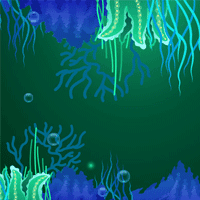Harmful algal blooms are becoming a global problem for our waterways. To combat this issue, scientists have developed a floatable biochar-based sponge that may help control algal takeover in rivers and lakes.

Algal blooms are exacerbated by urbanization, population growth, and nitrogen and phosphorus leaching into waterways. Although these tiny photosynthesizers are important oxygen-producers—and a key part of the food chain—when they multiply too quickly, they release toxins and can suffocate other aquatic life.

When Good Algae Turn Bad: How Chemists are Battling the Blooms
New research published in ACS ES&T Water reports on a novel floatable composite catalyst based on powered biochar. Biochar is a metal-free carbon catalytic material which has been used as an environmental adsorbent due to its potential for carbon sequestration, low cost, and simple preparation. However, biochar is typically powdered, making it hard to separate and recycle and sometimes leading to secondary pollution. Furthermore, biochar on its own is likely to aggregate and sink, which limits the time it is in contact with the surface algal bloom.
To address these challenges, the team created a floatable vessel for the powdered biochar, using polyvinyl alcohol as a cross-linking agent and a sponge as the carrier. This format presents two potential advantages: floatable 3D material can be easily collected and recycled, and the hierarchical pore structure lends itself well to facilitating adsorption and accelerating catalytic reactions.
Results showed high algae inactivation efficiency, stable mechanical properties, and repeatability. The sponge removed more than 97% of Microcystis aeruginosa from water samples in just over four hours. Additionally, there was good stability and repeatability, with removal efficiency of 90% after four reuses. The authors hypothesize that reactive oxygen species inactivated algae cells by attacking cell membranes and damaging their antioxidant systems.
Others have also been exploring emerging technologies for battling marine pollution. In one study, scientists developed a new technique leveraging visible light to tackle the problem of harmful microorganisms in ballast water without needing to add any additional chemicals. This system was able to completely eradicate a harmful bacterium, Vibrio alginolyticus, in just 35 minutes when exposed to sunlight.
Another team investigated how to improve base metal catalysts such as cobalt phosphide for more effective electrooxidation, a promising technique for removing organic pollutants—especially antibiotics—from water. The authors observed that when they added iron to the mix, the new material was able to more successfully "stick" to water and break down contaminants more effectively (and cheaply) than current methods.
Although these techniques display great potential for tackling water pollution, continued research in these fields will be necessary to deliver efficient, cost-effective cleaning options for direct use in waterways. If your research focuses on solutions to water-related challenges, we encourage you to consider submitting your work to one of our upcoming Virtual Special Issues in this area:

Call for Papers: Navigating Challenges and Charting Solutions of Water Issues in Southeast Asia

